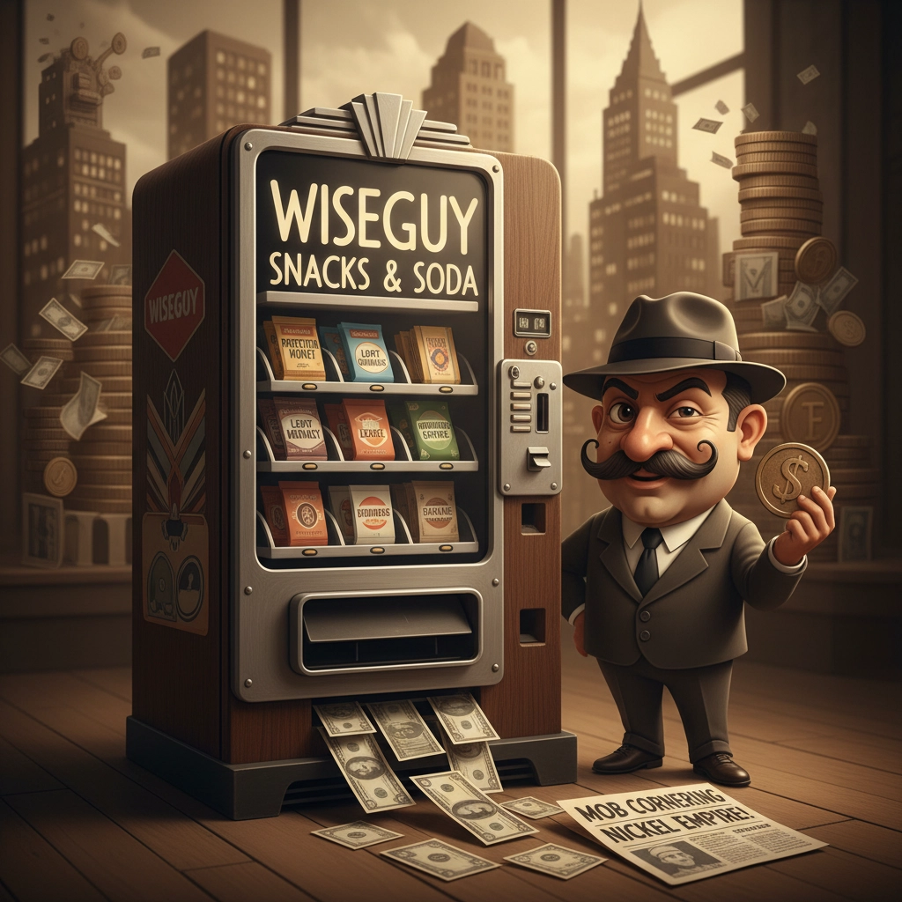A (Surprisingly Interesting) Brief History of Vending Machines
Ever wondered who thought, "Hey, what if we could sell stuff without actually having to talk to people?"
Well, buckle up, because the history of vending machines is way wilder than you'd expect, and it goes back a lot further than that sketchy snack machine in your office break room.
Turns out, automated retail has been solving human problems (and creating new ones) for over 2,000 years. From ancient Egyptian temples to today's smart machines that practically read your mind, vending has always been about one thing: making life a little easier, one coin drop at a time.
The OG Vending Machine (Circa 50 AD)
Picture this: You're a devoted worshipper in ancient Alexandria, and you want some holy water. But there's always that guy who takes way more than his fair share, leaving everyone else high and dry. Sound familiar? (Looking at you, person who takes the last coffee without making a fresh pot.)
Enter Hero of Alexandria, a Greek engineer who was clearly ahead of his time. In the first century AD, this genius invented the world's first vending machine, a holy water dispenser that would make modern engineers weep with admiration.
Here's how it worked: Drop a coin in the slot, and its weight would land on a pan connected to a lever. The lever would open a valve, holy water would flow, and when the coin's weight eventually caused it to slide off the pan, click, valve closes. No more, no less. Fair and square.
Pure brilliance, right? It was like having a bouncer for holy water, but made of bronze and completely incorruptible.
The Great Vending Drought (51 AD - 1822 AD)
Then... nothing. For over 1,600 years, vending machines basically vanished from human civilization. Sure, there were some tobacco machines in 17th-century English taverns, but that's like saying someone invented the airplane because they strapped feathers to their arms and jumped off a cliff.
What happened? Maybe people got too chatty and missed human interaction. Maybe the technology was lost to time. Or maybe everyone was just too busy dealing with plagues and invasions to worry about automated snack distribution. Fair enough.
The Victorian Comeback Tour
The 1800s brought vending back with a vengeance. In 1822, English bookseller Richard Carlile created a machine that sold banned books, basically the first underground vending operation. Talk about sticking it to the man!
But the real game-changer came in 1883, when Percival Everett introduced the first modern vending machine in London. His machines sold postcards at railway stations and post offices, and they were an instant hit. Suddenly, travelers could grab notepaper, envelopes, and postcards without dealing with cranky postal clerks. Revolutionary.
America Joins the Party
By 1888, vending machines had crossed the Atlantic and landed in New York City, where Thomas Adams installed the first American vending machine at subway stations. What did it sell? Tutti-Frutti chewing gum. Because nothing says "welcome to America" quite like minty-fresh convenience on the go.
Meanwhile, over in Germany, chocolate manufacturer Stollwerck was going absolutely bonkers with vending. By 1893, they had deployed 15,000 machines across the country, selling everything from chocolate to chewing gum, cigarettes, matches, and soap. That's some serious vending ambition right there.
The Beverage Revolution
The early 1900s marked a turning point that would make any modern office worker shed a tear of gratitude: the birth of beverage vending machines. At first, these machines dispensed sodas into cups, which was fine until someone inevitably dropped their cup and created a sticky mess that lasted until the next ice age.
But 1937 changed everything. That's when vending machines started selling bottled drinks, and suddenly the world made sense again. Coca-Cola was the pioneer here (because of course they were), partnering with companies called Vendolator and Vendo to create machines that sold those iconic glass bottles.
Pepsi jumped on board faster than you could say "cola wars," and just like that, the beverage vending industry was born. Finally, humans could get their caffeine fix without having to make small talk with a barista at 2 PM on a Tuesday.
The Gumball Golden Age
Let's take a moment to appreciate gumball machines, which arrived on the scene in 1907. These weren't just vending machines, they were art. Colorful, mesmerizing, and utterly irresistible to anyone under the age of 12 (and plenty of adults, let's be honest).
There's something deeply satisfying about dropping a penny, turning that handle, and watching a perfectly round gumball roll down the chute. It's like a tiny slot machine, but instead of losing your house, you get something to chew on for exactly three and a half minutes.
Mid-Century Milestones
The 1920s brought us cigarette vending machines (thanks, William Rowe), which seemed like a great idea at the time. These machines became fixtures in restaurants, bars, and hotels, dispensing packs of cigarettes with the same casual efficiency as today's machines dispense energy drinks.
Of course, times change, and what seemed convenient then makes us cringe now. But that's the beauty of vending machine history, it's a perfect mirror of society's evolving needs, wants, and (occasionally questionable) decisions.
The Digital Revolution
Fast-forward to the mid-2000s, when vending machines got their first major technological upgrade: credit card readers. Suddenly, you weren't limited to whatever loose change was rattling around in your pocket. You could buy higher-priced items, over-the-counter medications, travel-sized toiletries, even electronics.
This was huge for places like hotels, airports, and office buildings, where people needed more than just snacks and sodas. Finally, you could grab some headache medicine at 11 PM without having to hunt down a convenience store or explain your life choices to a pharmacist.
The Smart Machine Era
And now? Well, now we're living in the golden age of vending. Modern machines come equipped with touchscreens, IoT connectivity, and payment options that would make Hero of Alexandria's head spin. Apple Pay, Android Pay, contactless cards: if it's a payment method, chances are a modern vending machine can handle it.
Some machines even use artificial intelligence to suggest products based on the time of day, weather, or your previous purchases. It's like having a personal shopping assistant who never judges you for buying three bags of chips at 3 AM.
But here's the thing: despite all this fancy technology, the core mission hasn't changed. Whether it's holy water in ancient Alexandria or a cold energy drink in a modern office, vending machines are still solving the same fundamental problem: getting people what they need, when they need it, without the hassle.
Why This History Matters
Understanding vending's journey from ancient temples to smart offices isn't just trivia: it's proof that good ideas have staying power. For over two millennia, humans have been fine-tuning the art of automated retail, and the result is a multi-billion dollar industry that touches virtually every workplace, school, and public space.
At Pura Vida Air, we're not just following this tradition: we're helping write the next chapter. Our smart vending solutions combine the best of historical reliability with cutting-edge convenience, because your employees deserve better than wondering if the machine will eat their dollar (again).
Want to see how far vending has really come? Check out what modern workplace refreshment looks like at puravidaair.com. Trust us, Hero of Alexandria would be impressed.
The next time you grab a snack from a vending machine, take a moment to appreciate the incredible journey that brought that moment to life. From ancient Alexandria to your office break room, it's been one heck of a ride: and the best is yet to come.



